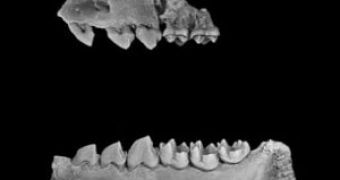Scientists at the University of Alberta in Edmonton, Canada have recently described a very odd ancient mammal, named Horolodectes sunae, for the unusual shape of the crowns of the teeth.
Horolodectes lived in Paleocene era, about 60 million years ago, soon after the dinosaur extinction (which took place 65 million years ago). Paleocene was a period of rapid mammal diversification. In the last 30 years, the researchers collected a sum of teeth and jaw fragments. Horolodectes was a small mammal of 10 cm long and its powerful jaws enabled him a relatively strong bite.
The teeth resemble in many ways those of primitive relatives of ungulates (hoofed mammals like horses, deer, rhinos, elephants and cows). Current ungulates are herbivores, few omnivorous (pigs), but Horolodectes seemed to be insectivorous (it ate small insects and grubs). "It had sharp crests on the teeth which formed blades, indicating it was likely carnivorous," said Craig Scott, a PhD candidate.
In fact, scientists suspect that the first ungulate had a carnivorous diet or was at least insectivorous and shared a common ancestry with the group of the carnivorous mammals.
Horolodectes name (means 'hourglass biter') refers to the peculiar hourglass-shaped premolars (the teeth before the molars). The very tall, sharp premolars are unique in the mammal world. "There is nothing else with teeth quite like it," Craig said.
"In an area of North America that's been fairly well studied, it's unusual to have a critter like this pop up. It's not known anywhere else, just in Alberta. And it's quite distinct. There's no mistaking it", Scott said.
Horolodectes is still not clearly positioned in the evolutionary ladder of the mammals. "It's just too bizarre to place in any group that we've known about previously," said Scott.
"It's an open question until we can find more of it. We have no information from a skull or other parts of the body."
Photo credit: University of Alberta

 14 DAY TRIAL //
14 DAY TRIAL //